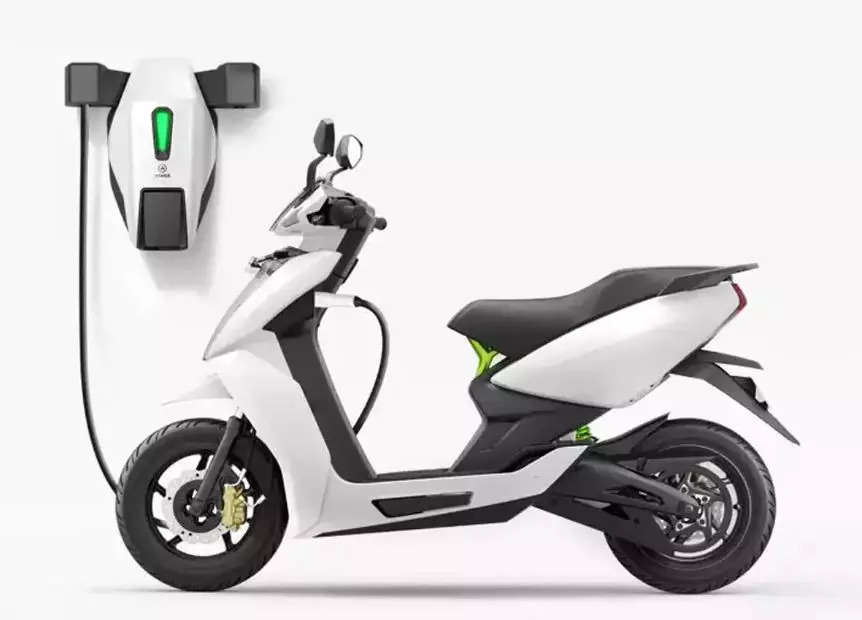
New Delhi: The electric two-wheeler (E2W) OEMs are bracing for a complete withdrawal of subsidies, as the second edition of the Faster Adoption & Manufacturing of Hybrid, Electric Vehicles (FAME) scheme nears its end. The scheme is scheduled to end by March 31, 2024. There are mixed signals from the government about any new incentive scheme for promoting E2W sales.
While some stakeholders have been keen on continuing with incentivization for pushing E2W sales, the alleged subsidy misappropriation during FAME II by some E2W manufacturers appears to have spoiled the chances of the scheme getting an extension.
In this uncertain scenario, some of the E2W OEMs have said in a communication to the government that if other vehicle categories are given subsidies in future, this would be grossly unfair to the two- wheeler users. The OEMs have also made several suggestions to the government on tweaking the FAME scheme beyond 2024, so that it is easier to monitor subsidy disbursal. It also reduce the total subsidy bill.
Nikhil Bhatia, Co-Founder and COO at HOP Electric Mobility, said that among the suggestions made to the government is “a small but meaningful subsidy (say INR5000/kwh) pushed directly to customers as Direct Benefit Transfer (DBT) on Aadhar/UPI stack. This can be easily claimed by the customer via a single window portal just by uploading the registration number and invoice copy. Technical details of the vehicle can be fetched through Vaahan portal. And OEMs can pre-register their vehicle models based on homologation certificates”.
If this suggestion were to be accepted by the government, it would mean subsidy amount is reduced to about a third of what was earlier given under FAME II for incentivising E2W sale. Also, DBT as a mode of subsidy transfer is already successful for much bigger government schemes and is a preferred mode of subsidy transfer to stop pilferages and misappropriation.
A DBT of FAME subsidy would also mean that the present trend of a significant amount of working capital of the OEM remains free – as of now, it takes months for the government’s reimbursement of subsidy to the OEM, which has already been provided by the OEM to the customer at the retail outlet.
Not only is the industry getting used to the idea of a much lower subsidy amount, it has also pointed out to the government that excluding E2W from any future incentive scheme would be unfair, since two-wheelers account for a bulk of vehicle sales.
Debi Prasad Dash, Chair of the Indian Electric Mobility Council (IEMC) told ETAuto that the E2W industry requires FAME subsidy extension for another three years to achieve the desired scale of adoption. He said that in a communication to the Prime Minister’s Office, the IEMC has also suggested that instead of excluding E2Ws, farm vehicles (tractors etc) and construction equipment should be added in any subsequent FAME scheme.
As of now, INR 5393 crore has been disbursed as subsidy amount under FAME II scheme to various vehicle categories since 2019.
ICE vs. Electric:
Some of the prominent ICE two-wheeler OEMs had been opposing the subsidy regime for promoting E2W sales earlier, saying that subsidies distort the market. An E2W industry player pointed out that ever since the big ICE two-wheeler OEMs have entered the electric segment, their tune has changed and now the ICE manufacturers are also in favour of a continued subsidy regime. A message to the President of the Society of Indian Automobile Manufacturers (SIAM), which represents ICE OEMs across vehicle categories, remained unanswered.
The industry player quoted above said that SIAM as well as the Federation of Indian Chambers of Commerce and Industries (FICCI) have now sought continuation of the subsidy regime, after ICE players have also begun operating in the electric business.
In its statement on electric vehicle subsidy, FICCI has said that “subsidy support, in the form of upfront incentive in the form of price reduction to EV customers, should ideally continue till EV penetration crosses a threshold value in each segment, and to allow critical mass to be achieved towards India’s stated goal of minimum 30% as a whole, to bring benefits of this technology to the masses. There can be a mid-scheme review at the end of 3 years, to assess the penetration achieved and calibrate the scheme or slabs of incentives.” Not just ICE OEMs, even some of the naysayers within the E2W community, who had earlier brushed aside the importance of subsidies in accelerating sales, are now openly supporting incentivisation.
Alleged misappropriation:
The second edition of FAME was launched in 2019, in which subsidies of up to 40% of vehicle cost were on offer for E2Ws. The subsidy was made available to the customer at the point of purchase and OEMs could, after paying first, claim this amount from the government subsequently. But the subsidy was conditional on achieving mandatory localisation up to 50%. The scheme was structured in such a manner that the subsidy release by the government was to happen only after its own certified testing agencies had checked a random sample of products for compliance with all the conditions.
By late 2021, a flurry of anonymous emails, alleging subsidy misappropriation by a few E2W startups, alleging non-compliance with the mandatory localisation norms.
The Heavy Industries ministry subsequently bore down on the alleged offenders, stopping subsidy payments and subsequently reducing the overall subsidy eligibility. In the entire fracas, the FAME II architecture was called into question, specifically for the E2W industry.
The industry player quoted above said that one of the OEMs against whom the ministry initiated a probe has now taken the entire matter to court. “The MHI has been under a cloud for almost 1.5 years due to the fiasco on the FAME subsidy scheme. The matter is now in court. It is highly unlikely that any regime will reward that sort of performance by the ministry….where such serious policy gaps exist”.
It is pertinent to remember that the first two years of FAME II could not really kickstart e2W sales. Only when the subsidy quantum was increased – from INR 10,000 per KW battery to INR 15, 000 per KW alongside an increase in overall ceiling from 20% of vehicle price to 40% of vehicle price – that sales took off.

















